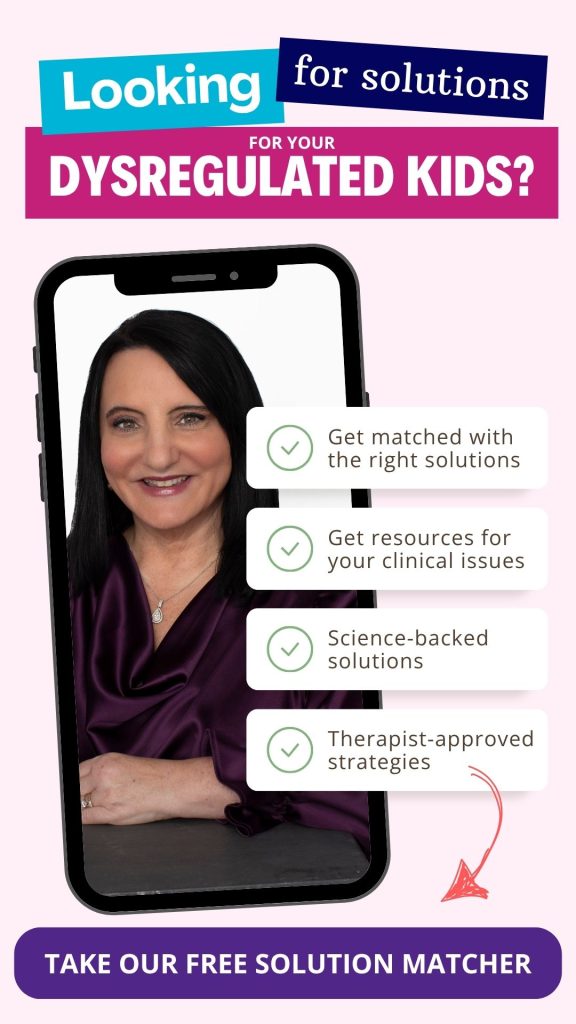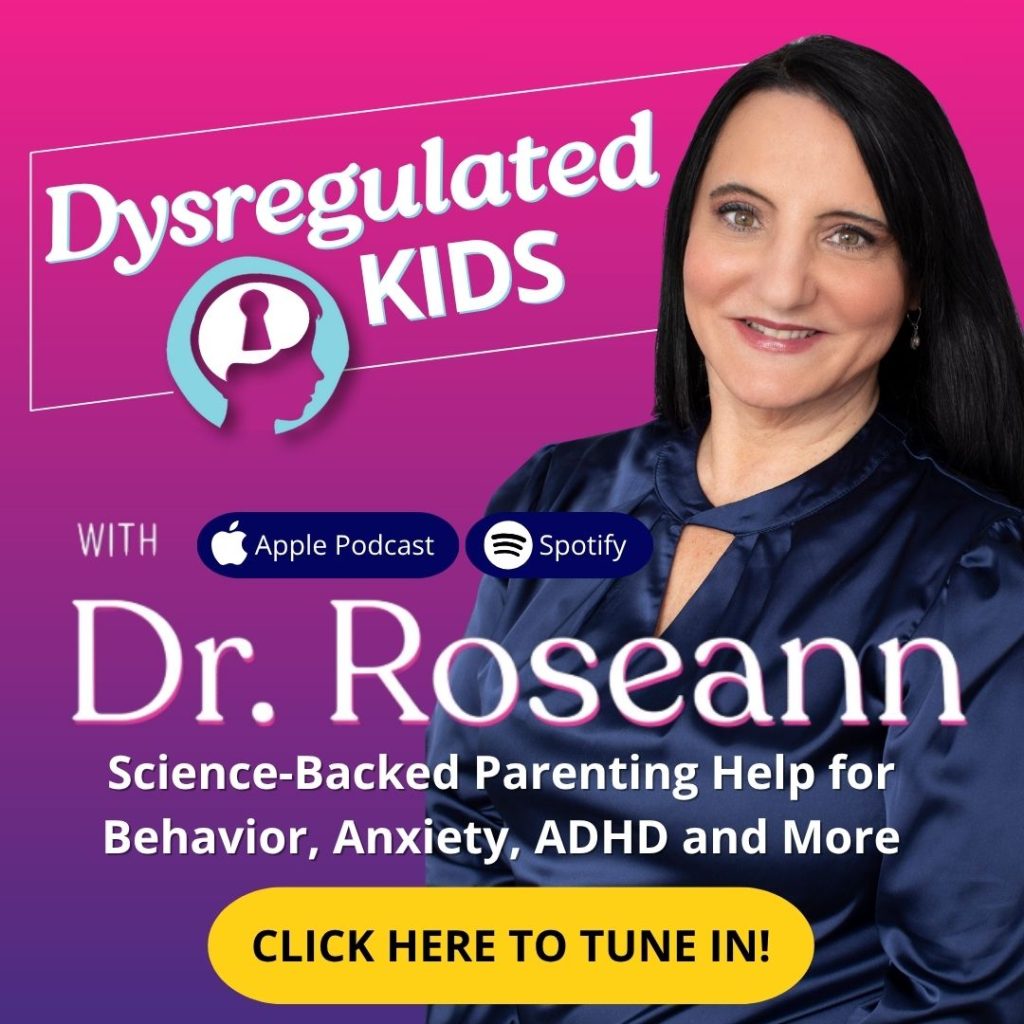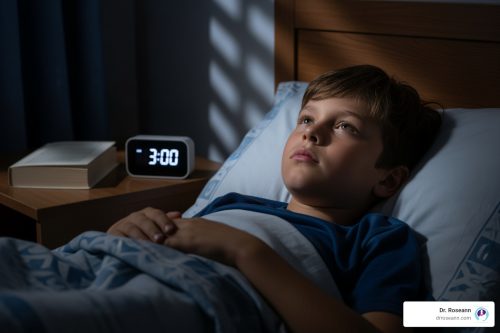Estimated reading time: 15 minutes
Raising a child whose emotions flare like fireworks can leave you completely drained. Some moments vanish in a blink while others stretch on endlessly.
Ever wish a tiny magic switch could calm that stormy brain? PEMF devices act like a gentle lighthouse, sending pulses that help cells settle, breathe and sometimes ease ADHD, anxiety, depression, OCD, ASD or PANS/PANDAS.
Let’s untangle the science without frying your head and explore a few simple steps you can try at home. Behavior is communication—let’s tune in, translate signals and give your child a real chance to feel understood.
Key Takeaways
- PEMF devices send gentle pulses that help cells repair and settle like a little pause button for a busy brain.
- Children with ADHD, anxiety, depression, OCD, ASD, or PANS/PANDAS may notice calmer moments or sharper focus. Every child responds differently, so patience matters more than expectation.
- Use kid-safe devices and supervise sessions closely—steady support matters far more than quick fixes.
- Early research shows promise, with benefits often appearing quietly as small wins that add up over time.
What is PEMF Therapy?
Pulsed Electromagnetic Field (PEMF) therapy might sound high-tech and intimidating, but at its core, it’s a very simple idea: using gentle, low-frequency magnetic waves to support the body’s natural healing processes.
Think of it like this—our cells are like tiny batteries. Over time, stress, injury, or illness can drain their energy. PEMF therapy sends safe, targeted pulses of energy that “recharge” those batteries so your body can function more effectively.
Unlike treatments that rely on medication or invasive procedures, PEMF is non-invasive and painless. You don’t feel zapped or shocked. In fact, many people describe it as calming, relaxing, or even soothing while they sit or lie on a PEMF mat or use a portable device.
For parents exploring therapies for their child’s brain and body, PEMF offers a gentle way to encourage balance—especially when paired with other brain-calming practices.
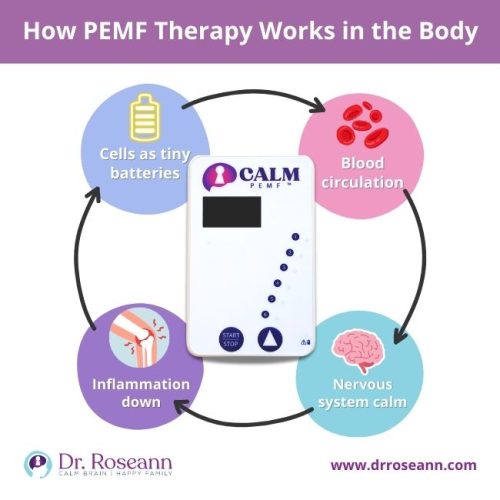
How Does PEMF Therapy Work?
To understand PEMF, imagine your body as a busy city with roads, traffic signals, and communication systems. When things run smoothly, everything flows. But stress, trauma, or illness can throw the system into gridlock.
PEMF works by sending electromagnetic waves that “reset” the body’s traffic signals at the cellular level. These waves pass harmlessly through the skin and reach your cells, where they:
- Cellular Repair: PEMF stimulates the movement of ions and electrolytes in and out of cells, which boosts energy production (ATP). More ATP means your cells can repair damage and function better.
- Improved Circulation: The gentle pulses help blood vessels expand, increasing oxygen and nutrient delivery to tissues while removing waste products.
- Nervous System Balance: By influencing brainwave activity and calming overactive circuits, PEMF shifts the body out of stress mode and into healing mode.
- Anti-Inflammatory Effects: Research shows PEMF reduces pro-inflammatory markers, which plays a role in easing both pain and mood symptoms.
When the body gets these signals, it remembers how to restore balance. That’s why people often report better sleep, less pain, and a greater sense of calm after consistent use.
For kids with anxious or dysregulated brains, PEMF can act like a gentle reminder to their nervous system: “It’s okay to relax now. You’re safe.”
PEMF therapy isn’t new—and it isn’t “woo.” It has been studied for decades in both Europe and the U.S., with some very real medical approvals to back it up.
- FDA Approvals: PEMF devices are cleared for bone healing, wound recovery, post-surgical pain and swelling, and even treatment-resistant depression.
- Research Evidence: Studies show PEMF can reduce inflammation, improve circulation, speed up recovery, and support brain function. Emerging evidence points to benefits for anxiety, ADHD, sleep problems, and chronic pain.
- Brain Connection: Scientists believe PEMF influences brain wave activity and helps regulate communication between brain cells, which is why people often feel calmer or more focused after treatment.
I only recommend therapies that are grounded in research. What excites me about PEMF is that it’s not only well-studied but also practical—it’s something families can safely bring into their homes to support healing day after day.
Electromagnetic healing is about giving the body the right signals at the right time. With consistent use, it helps the brain and body remember what regulation feels like.
Conditions PEMF Therapy May Support
While PEMF isn’t a cure-all, research and clinical use show that it can be a powerful support tool for a wide range of conditions. By working at the cellular level and calming the nervous system, PEMF helps create the foundation for healing and regulation.
Here are some of the most common areas where people see benefits:
Pain Relief and Inflammation
Inflammation is the body’s natural response to stress or injury—but when it lingers, it fuels pain and slows down recovery. PEMF therapy helps reduce inflammation and improve circulation, which can ease everything from joint pain to muscle soreness. Many families use it to support healing after sports injuries or to manage chronic pain conditions.
Sleep Regulation
Poor sleep is often the first sign of a dysregulated nervous system. Because PEMF helps shift the brain from “fight-or-flight” into a calmer, more balanced state, many people find it easier to fall asleep and stay asleep. Parents often share that their children are not only sleeping longer but also waking up more refreshed after regular PEMF sessions.
Stress and Anxiety
One of the most consistent benefits of PEMF is its ability to calm the stress response. By gently nudging the brain out of hyperarousal, PEMF can reduce feelings of worry, restlessness, and overwhelm. For kids who live in a constant state of “on edge,” this can be life-changing.
Lyme Disease
PEMF devices send gentle pulses that help cells repair and settle—like a tiny pause button for a busy brain. Kids with Lyme disease often face:
- Fatigue
- Achy joints
- Brain fog
The good news? These pulses can provide quiet support and gentle relief (Dennis, 2021).
Key Benefits
- Enhanced Cellular Repair – PEMF encourages natural healing and reduces inflammation, giving cells a gentle nudge toward balance (HBOT Clinic of Idaho, 2022).
- Pain Management – Better circulation may ease aches or stiffness, helping everyday movement feel lighter (Dennis, 2021).
- Improved Sleep – Rest often feels disrupted for kids, and PEMF may help regulate sleep, creating small but meaningful wins overnight.
Depression and OCD
Children carrying depression, or OCD often feel weighed down by invisible storms. PEMF therapy sends gentle pulses, nudging busy brains toward calm—like a lighthouse guiding restless ships.
Scientific Insights
- Brainwave Modulation – PEMF can subtly reshape brainwaves, easing anxiety and depressive symptoms. Martiny et al. (2010) found this synchronization fosters quiet emotional balance.
- Neurotransmitter Regulation – By gently influencing mood-related chemicals, PEMF helps kids feel steadier, calmer, and more resilient (Ashrafi et al., 2025).
Practical Applications
- Home Use – Kid-friendly devices slip into routines, keeping therapy consistent without stress.
- Clinical Sessions – Professional guidance offers targeted focus for tricky symptoms, boosting progress.
Even small moments of calm count—every gentle nudge matters. Pairing gentle PEMF with patience and guidance often unlocks calmer behavior, sharper focus, and emotional resilience—proof that quiet interventions can create lasting change.
Read more: PEMF for Depression, Anxiety, and OCD: Science, Benefits, and Applications
Attention Deficit Hyperactivity Disorder (ADHD)
Children with ADHD often feel like their brains are juggling too many open tabs at once. PEMF therapy sends gentle pulses, helping quiet those busy circuits and giving focus and memory a little breathing room.
Here’s how PEMF can help:
- Improved Attention Span
PEMF sessions help kids stay on task longer and act with more control. Kim and Lee (2025) found digital therapeutic interventions, including PEMF-style devices, improved focus in daily routines.
- Enhanced Memory
PEMF may strengthen recall and retention. Constantinidis and Klingberg (2016) show electromagnetic therapies can fine-tune brain activity, helping working memory run smoother.
- Behavioral Regulation
Calming overactive nervous systems helps kids manage impulses. Studies suggest this therapy reduces ADHD symptoms, creating small moments of calm in hectic days.
Read more: PEMF for ADHD: Memory and Focus Enhancement for Children
Practical Tip: Pair sessions with your calm presence. Steady support transforms tiny wins—focused homework, softer reactions, calmer sleep—into lasting progress.
Behavior is the Symptom; Brain Regulation is the Solution.
Benefits of PEMF Therapy
PEMF therapy sends soft, rhythmic pulses that help brains and bodies settle—like a quiet traffic light guiding busy signals back into order. Even small nudges can make a meaningful difference for kids facing emotional or behavioral challenges.
Some Proven Benefits of PEMF Therapy
1. Reduced Anxiety
- Calms an overstimulated nervous system
- Gives children brief moments of ease during stressful days
- Research shows pulsed EMF exposure may reduce anxiety-like behaviors in animals and humans (Pawluk, 2019)
2. Improved Mood Regulation
- Influences brainwave patterns to stabilize moods
- Creates little pockets of emotional balance parents often notice first
3. Enhanced Focus and Attention
- Supports cognitive clarity
- Helps kids with ADHD or distractibility find more flow at school or home
4. Pain Reduction
- Eases aches and chronic discomfort (Markov, 2007)
- Sends tiny repair signals to tired muscles and joints
5. Better Sleep Quality
- Promotes relaxation
- Turns bedtime from a nightly struggle into calmer, restorative rest
Small Wins Add Up
Consistent PEMF sessions combined with patience and steady support can help children gradually show calmer behavior, sharper focus, and more emotional balance—proof that quiet interventions can create lasting change.
Read more: 11 Benefits of PEMF Therapy For Lyme Disease
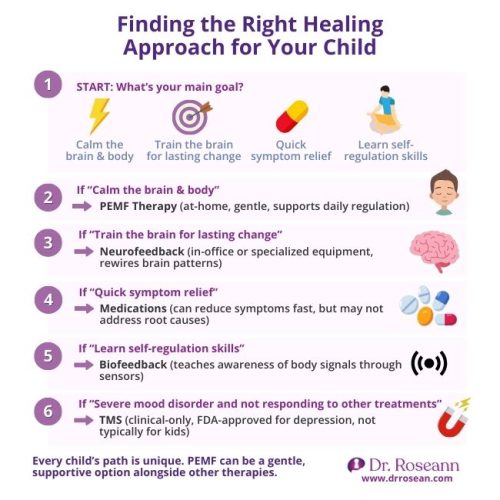
PEMF Therapy vs. Other Healing Approaches
Parents often ask me how PEMF stacks up against other therapies. The truth is, there’s no one-size-fits-all solution—each approach has its place. But understanding the differences can help you choose what’s right for your child and family.
| Therapy | Details |
|---|---|
| PEMF Therapy | How it works: Uses pulsed electromagnetic fields to “recharge” cells, improve circulation, and calm the nervous system. Pros: Safe, non-invasive, can be used at home daily, supports both body and brain. Considerations: Results build over time and require consistency. |
| Neurofeedback | How it works: Teaches the brain to self-regulate using real-time feedback on brainwaves. Pros: Strong evidence for ADHD, anxiety, and mood regulation; lasting results. Considerations: Requires in-office sessions or specialized equipment; higher cost. |
| TMS (Transcranial Magnetic Stimulation) |
How it works: Delivers high-intensity magnetic pulses to targeted brain regions. Pros: FDA-approved for treatment-resistant depression; effective for adults. Considerations: Clinical-only, not for kids; expensive and less accessible. |
| Biofeedback | How it works: Uses sensors to track heart rate, breathing, or muscle tension to train regulation. Pros: Builds awareness and control of stress responses. Considerations: Requires regular training sessions and ongoing practice. |
| Medications | How it works: Alters brain chemistry to reduce symptoms.
Pros: Can provide faster relief for severe symptoms. Considerations: May come with side effects and doesn’t address root causes of dysregulation. |
When PEMF May Be Preferred
PEMF stands out as a gentle, at-home option that families can use regularly without major side effects or invasive procedures. While it isn’t a replacement for targeted therapies like neurofeedback or necessary medications, it can be an excellent complement—helping calm the nervous system so other treatments work more effectively.
The best approach is rarely just one therapy. What excites me about PEMF is that it empowers families with a safe, practical tool they can use every day—right in their own home.
Read more: PEMF Therapy Benefits: 25+ Proven Health & Healing Effects

Types of PEMF Therapy Devices
Not all PEMF devices are created equal. They come in different forms, strengths, and settings, which can feel overwhelming at first. The key is to understand what each type is designed for so you can match the device to your needs (or your child’s).
Here are the main categories of PEMF devices you’ll see:
| Type | Best For | Pros | Cons |
|---|---|---|---|
| Clinical-Grade | Acute medical needs, rehab | Strong, effective, supervised | Not accessible at home, higher cost |
| At-Home Devices | Daily stress, sleep, chronic wellness | Convenient, family-friendly, safe | Lower intensity than clinical models |
| PEMF Mats | Whole-body healing, sleep, relaxation | Easy to use, covers the entire body | Less targeted, requires lying down |
| Portable Devices | Pain, inflammation, on-the-go relief | Compact, flexible, can use anywhere | Smaller coverage area |
| Headbands/ Wearables |
Focus, anxiety, mood | Direct brain support, discreet | Limited use, may cost more per feature |
Read more: What Is the Best PEMF Device For Children and Teens?
How to Choose the Right PEMF Device for You or Your Child
Choosing the right PEMF device is important—not just for safety, but for making sure you actually get the benefits you’re looking for.
Think of it like picking the right set of training wheels: the best choice is the one that helps your child feel supported and steady. There isn’t a one-size-fits-all device; the “best” option depends on your family’s needs, goals, and budget.
Here are the key things to keep in mind:
1. Start With Your Goals
- Sleep or anxiety: a PEMF mat works well.
- Localized pain: a portable pad or wrap is practical.
- Focus or mood support: a wearable or headband may be best.
2. Frequency of Use
If you’ll use it daily (like bedtime routines), choose something simple and comfortable. For occasional flare-ups, a smaller portable device may be enough.
3. Safety and Features
Look for adjustable intensity, timer functions, and certified safety testing—especially for kids.
4. Portability vs. Home Use
Mats are better for at-home routines; portable devices work well for school, work, or travel.
5. Budget
Prices range from a few hundred to several thousand dollars. Don’t chase bells and whistles—the best device is the one you’ll actually use consistently.
Safety, Side Effects, and Misconceptions
It’s natural to wonder if PEMF therapy is truly safe—especially when you’re considering it for your child. The truth is, PEMF has been well-researched and widely used in both medical and home settings for years.
While it’s considered very safe for most people, knowing the basics about possible mild side effects and clearing up common myths can help you use it with confidence.
Safety Considerations
- Certification: Choose devices that meet recognized health and safety standards.
- Age Appropriateness: Opt for devices with adjustable settings suitable for children or teens.
- Supervision: Be present during sessions with younger kids to make sure they feel safe and comfortable.
- When to Avoid: PEMF is not recommended for those with pacemakers, implanted medical devices, uncontrolled seizures, or during pregnancy.
Possible Side Effects
Most people tolerate PEMF very well. If side effects occur, they are usually mild and temporary, such as:
- Feeling a little fatigued or drowsy after a session.
- A brief increase in detox-like symptoms (headache, mild nausea).
- Temporary tingling or warmth in the area of use.
These typically resolve quickly and can often be managed by lowering the intensity or shortening session time.
Common Misconceptions
- ❌ “PEMF is radiation.” → False. PEMF uses safe, low-frequency magnetic fields—not harmful ionizing radiation.
- ❌ “It’s addictive or habit-forming.” → False. PEMF simply helps the body restore balance; it isn’t chemically addictive.
- ❌ “It’s experimental or unproven.” → False. PEMF has decades of research and several FDA approvals backing its use.
When used properly, PEMF therapy is generally a safe, gentle, and science-backed tool that helps the body restore balance—giving families confidence and peace of mind as they support healing at home.
How to Use PEMF Therapy Effectively
Like any wellness tool, PEMF therapy works best when it’s used consistently and thoughtfully.
The good news is that it doesn’t require complicated protocols—just a little structure and some patience as your body (or your child’s) responds.
1. Start Slow and Steady
Begin with shorter, lower-intensity sessions so the body has time to adjust. For most families, 10–15 minutes a day is a good starting point. You can gradually increase session length as tolerated.
2. Consistency Matters More Than Intensity
Daily use—even in short sessions—tends to bring the best results. Think of it like brushing your teeth: it’s the regular habit that makes the real difference, not just one big effort.
3. Use at the Right Times of Day
- For sleep issues → evening sessions can help signal the nervous system it’s time to wind down.
- For focus and calm → morning or after-school use may help kids regulate before stressful times.
- For pain or inflammation → apply as needed, ideally during rest periods.
4. Pair PEMF With Other Supports
PEMF is most powerful when combined with other brain-calming strategies:
- A calming bedtime routine
- Balanced nutrition and hydration
- Practices like neurofeedback, therapy, or mindfulness
Together, these create a strong foundation for healing.
5. Listen to the Body’s Response
Most people feel calm or more energized after sessions, but a few may feel temporary fatigue or mild detox-like effects. That’s normal and usually short-lived. Adjust the duration or intensity if needed.
FAQs
How safe are PEMF devices for children?
PEMF devices are generally non-invasive and considered safe when used as directed. Kid-friendly devices often come with adjustable settings and built-in safety features. Always supervise sessions and follow manufacturer guidelines. Gentle, consistent use under professional guidance can support benefits while keeping your child safe.
Can PEMF therapy be used alongside other treatments?
Yes! PEMF therapy can complement therapies like occupational, physical, or behavioral interventions. It gently supports nervous system regulation, potentially enhancing focus, sleep, and mood. Always coordinate with healthcare professionals so sessions integrate smoothly into your child’s care plan, ensuring safety and consistency while reinforcing progress from multiple angles.
How long before I see results from PEMF therapy?
Results vary by child and condition. Some notice subtle changes in sleep, focus, or calmness within a few sessions, while others benefit gradually over weeks. Pairing PEMF with steady guidance and supportive routines helps tiny improvements stack into meaningful, lasting progress—proof that calm brains create brighter days.
Citations
Ashrafi, S., Barekatain, M., Rajabi, F., Mortazavi, S., Yazdi, N., & Shariat, A. (2025). The effect of pulsed electromagnetic field therapy on fatigue, depression, and quality of life in multiple sclerosis: a systematic review of randomized clinical trials. Archives of Neuroscience, 12(1). https://doi.org/10.5812/ans-147080
Clinic, H. (2022, October 9). How PEMF therapy repairs the damage from Lyme Disease – HBOT Clinic of Idaho. HBOT Clinic of Idaho. Retrieved August 15, 2025, from https://www.hbotclinicidaho.com/how-pemf-therapy-repairs-the-damage-from-lyme-disease/
Constantinidis, C., & Klingberg, T. (2016). The neuroscience of working memory capacity and training. Nature reviews. Neuroscience, 17(7), 438–449. https://doi.org/10.1038/nrn.2016.43
Dennis R. (2021). PEMF: A survey of clinical and individual uses and perceptions. Journal of Science and Medicine; 3(2):1-46. https://doi.org/10.37714/josam.v2i4.69.
Kim, S.-C., & Lee, H. (2025). An Analysis of the Impact of Digital Therapeutic Interventions on Attention and Working Memory in Children with Attention-Deficit/Hyperactivity Disorder: A Randomized Controlled Trial. Applied Sciences, 15(2), 788. https://doi.org/10.3390/app15020788
Markov, M.S. Pulsed electromagnetic field therapy history, state of the art and future. Environmentalist 27, 465–475 (2007). https://doi.org/10.1007/s10669-007-9128-2
Martiny, K., Lunde, M., & Bech, P. (2010). Transcranial low voltage pulsed electromagnetic fields in patients with treatment-resistant depression. Biological psychiatry, 68(2), 163–169. https://doi.org/10.1016/j.biopsych.2010.02.017
Pawluk, W. (2019). Pulsed Magnetic Field treatment of anxiety, panic and Post-Traumatic Stress Disorders. Alternative Complementary & Integrative Medicine, 5(3), 1–8. https://doi.org/10.24966/acim-7562/100075
Always remember… “Calm Brain, Happy Family™”
Disclaimer: This article is not intended to give health advice and it is recommended to consult with a physician before beginning any new wellness regime. *The effectiveness of diagnosis and treatment varies by patient and condition. Dr. Roseann Capanna-Hodge, LLC does not guarantee certain results.
Are you looking for SOLUTIONS for your struggling child or teen?
Dr. Roseann and her team are all about science-backed solutions, so you are in the right place!




